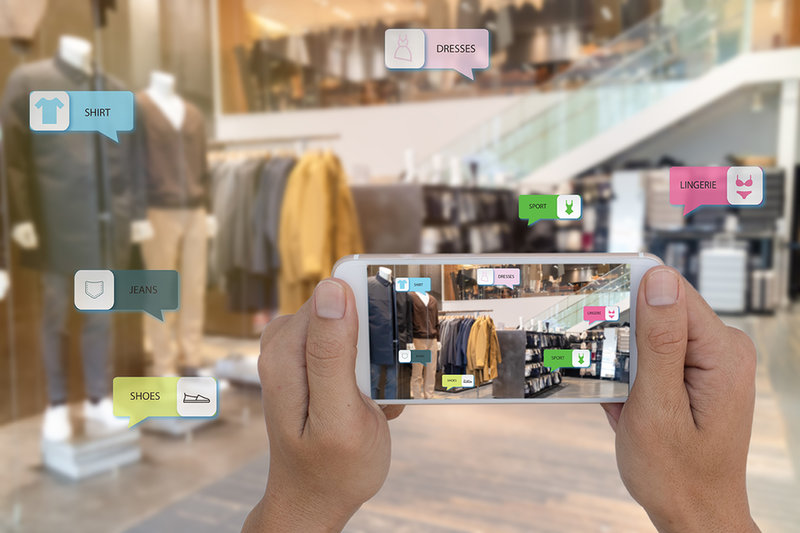Feature
Future of fashion technology
As digital and physical realities blur and technology in fashion gains momentum, fashion brands like Highsnobiety and The Fabricant envision a future where retail experiences are increasingly immersive, inclusive, and sustainable. Isatou Ndure reports.

Highsnobiety and The Fabricant shed light on the pros and cons of technology in fashion. Credit: Shutterstock.
With a finger on the pulse of Gen Z's preferences and technology entering the fashion world, brands are constantly adapting by challenging traditional supply chain models and unlocking endless possibilities for the future.
At the Reaktor Tech in Fashion event, Stefanos Constantinou, vice president of brand partnerships at fashion media brand Highsnobiety, and Adriana Hoppenbrouwer, co-founder and CMO of digital fashion house, The Fabricant shed light on innovative strategies and partnerships, their vision for digital-only fashion, and the pros and cons of technology in fashion.
You cannot be sustainable on your own. The whole industry must become sustainable. We must cooperate and collaborate.
Carlo Capasa tells Just Style.
Blurring digital and physical realities
Hoppenbrouwer highlights the blurred boundaries that exist between digital and physical realities in retail. She believes the convergence is increasingly prevalent and leads to more immersive customer experiences.
For example, she mentions how Highsnobiety's Paris store now sells digital items that customers can try out virtually, creating a completely new and captivating shopping experience. This tech-driven approach enhances the entertainment value of retail and strengthens the connection between brands and consumers.
“I would say the ability to generate content by participating in those experiences connects people,” says Hoppenbrouwer.

Mines in Bayan Obo in Inner Mongolia, China, extract one the largest deposits of rare earth metals found in the world. Credit: Bert van Dijk/Getty images
The rise of technology in fashion - pros and cons
Hoppenbrouwer emphasises sustainability as a major benefit of digital fashion as digital items are 97% more eco-friendly than physical ones. However, she also acknowledges the challenges in the digital fashion space, particularly the need for improved user experience and interoperability.
She highlights the growing popularity of using digital items and says digital lifestyles and behaviours are meeting in digital environments and the behaviours that form from that have already reached mass adoption.
“What hasn't reached mass adoption is the commercialisation and ownership of those items, which is enabled by blockchain.”
Hoppenbrouwer sees blockchain as an industry in its infancy and the biggest obstacle for the industry is enabling the behaviour behind ownership in user experiences.
“As a company, The Fabricant works super hard on improving the user experience making it seamless, and making it easier to take ownership of the digital assets that we are already familiar with.”
She believes that “interoperability" is crucial for navigating this space as it means there is no standard for digital fashion.
In other words, as a brand, you should know that your designs can be distributed broadly and for each design created you need to format it in different ways to suit several companies whether that be a dress to suit virtual game Fortnite or Roblox.
Multichannel landscapes in the supply chain
Hoppenbrouwer discusses the impact of the multichannel landscape on the fashion supply chain and how it introduced the concept of digital-only fashion.
This business model eliminates the need for physical production and traditional supply chains, offering a cost-effective and sustainable alternative.
She touches on a business model known as the 'filter' whereby purchasing a digital item gives the consumer ownership of a physical item as well.
“It has a huge benefit for the industry because it ties into “Made to Order” where the user has already paid upfront. I think digital-only fashion is highly profitable because you produce one item that can sell millions,” she adds.
Meanwhile, Constantinou delves into the enigmatic concept of a digital fashion house. He recognises defining a digital fashion house is a complex task, as it intertwines culture and social media with the metaverse, and brand experiences, which makes it ever-evolving and adaptable.
The Highsnobiety and Zalando partnership
Constantinou explains that in June last year, German fashion retailer Zalando acquired a majority stake in fashion media brand Highsnobiety.
The result is that Highsnobiety acts as a strategic and creative consultant helping Zalando to develop new inspiration-focused spaces and formats on its platform.
He describes it as an independent yet mutually beneficial partnership with Highsnobiety's creative agency assisting Zalando with connecting to the younger Gen-Z generation. This is done through innovative lookbooks and product assortments. In return, Zalando provides valuable backend support for Highsnobiety's ecommerce platform.
He adds: “We help each other reach an audience that we both want to reach with the expertise that we have. I think the partnership is perfect because one party has things the other doesn't and vice versa.”
Building brand-defining customer relationships
Highsnobiety's focus on building brand-defining customer relationships centres around identifying and tapping into moments that resonate with its audience.
Highsnobiety's commitment to consumer demand-driven operations aligns with this vision. It continues to evolve its publishing platform and t create unique experiences such as Gate Zero, which is a concept store that reimagines the potential of airport retail in partnership with Zurich Airport.
Through curated content and engaging experiences, Highsnobiety creates authentic cultural connections that extend beyond online interactions.
Constantinou points out: “Building flagships in Paris, Milan and Berlin, is us tapping into those cultural moments. We engage with our audience, we talk to our audience, we have a dialogue, and that naturally creates a demand for what the brand has to offer.”